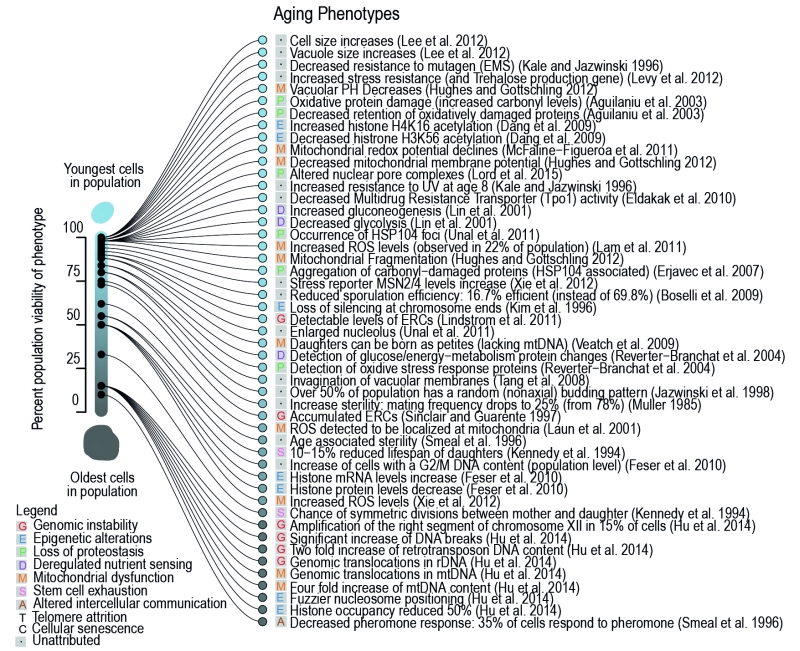FIGURE 1: Phenotypes occurring in the yeast replicative lifespan. Observations collected from primary literature as discussed herein and as associated to a relevant hallmark of aging (symbol in legend). Cited references are often not the first to observe the phenotype but are selected based on the earliest most precise report of the timing within the RLS (i.e. while [106, 107] described aged cells to be larger than young, [80] clearly observed this increase in size for a specific age, namely from the beginning on, when 100% of the population was still viable). Percentage of viability, at which age-related phenotype occurs in the population, was either directly taken from the primary literature source, or inferred based on the age of the yeast used in the publication, its average lifespan (if provided), or the average lifespan estimated from a compiled lifespan curve.
23. Dillin A, Gottschling DE, Nyström T (2014). The good and the bad of being connected: The integrons of aging. Curr Opin Cell Biol 26:107-12. http://dx.doi.org/10.1016/j.ceb.2013.12.003
24. Wei Y, Hu H, Xie G, Fu N, Ning Z, Zeng R, Khaitovich P (2015). Transcript and protein expression decoupling reveals RNA binding proteins and miRNAs as potential modulators of human aging. Genome Biol 16(1): 1–15. http://dx.doi.org/10.1186/s13059-015-0608-2
25. Lee SS, Vizcarra IA, Huberts DHEW, Lee LP, Heinemann M (2012). Whole lifespan microscopic observation of budding yeast aging through a microfluidic dissection platform. Proc Natl Acad Sci USA109(13): 4916-20. http://dx.doi.org/10.1073/pnas.1113505109

